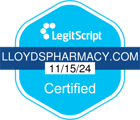Explore more

What are probiotics?
We’ve all heard of probiotics, but can the live bacteria in probiotics improve your gut health? Read our guide on probiotic food supplements to find out.
Continue reading
13 essential vitamins your body needs
Vitamins and minerals are essentials that your body needs to function properly. Discover the 13 essential vitamins that support your health, plus supplements.
Continue reading
What is collagen?
Collagen has become a must-have ingredient in skincare and supplements. But which ones do you try? Take a look at our guide for the best collagen products.
Continue reading
Types of magnesium supplements and their uses
We discuss the best types of magnesium supplements, from magnesium citrate to magnesium glycinate, and explain the uses and benefits of each.
Continue reading
Your guide to folic acid
Everything you need to know about folic acid, from what it does to food sources. Discover the benefits of folic acid and whether you should be taking this supplement.
Continue reading
Foods high in vitamin C
Want to increase the amount of vitamin C you're getting? Find out the top foods high in vitamin C and how you can easily add more vitamin C to your diet.
Continue reading
